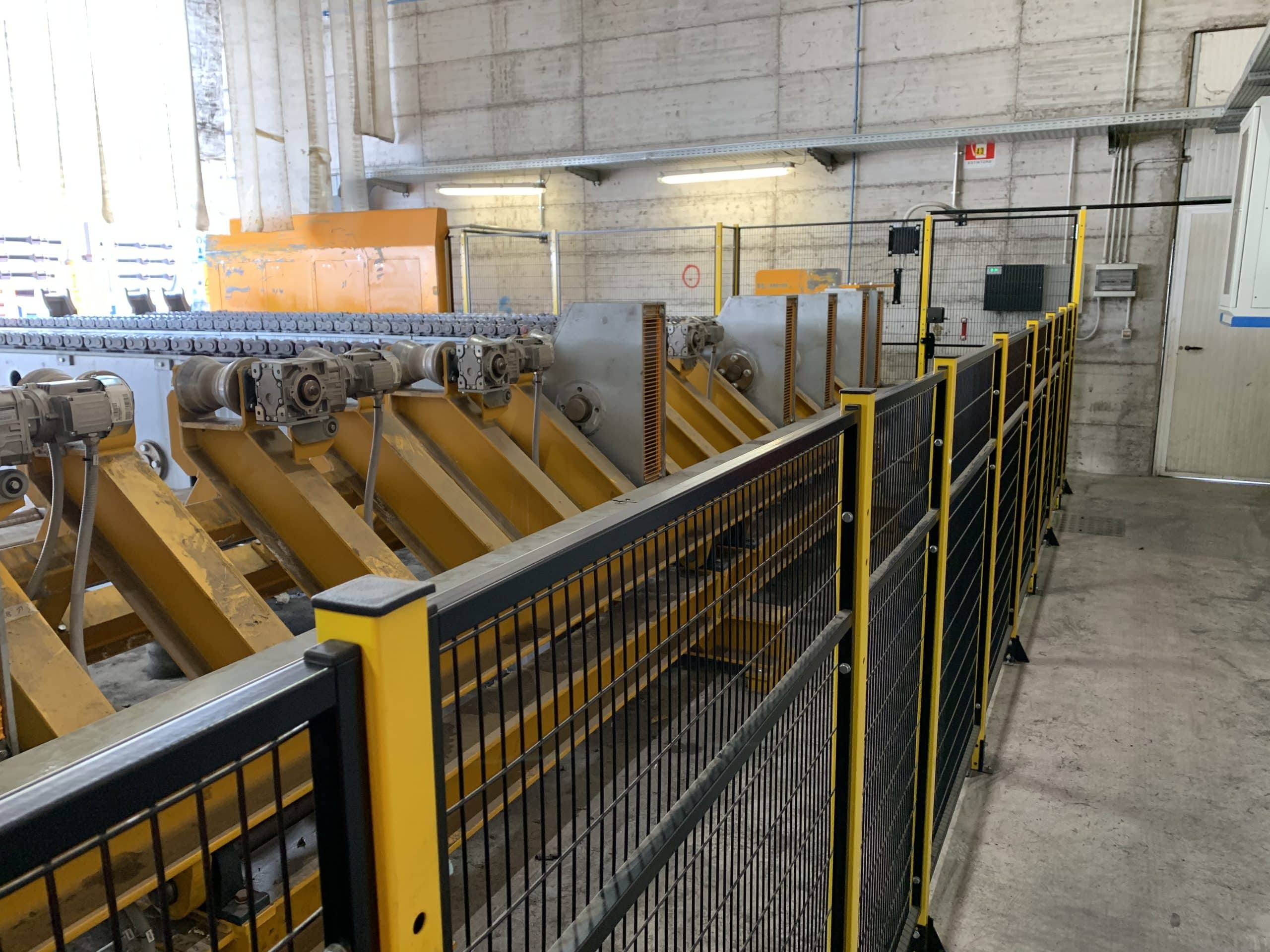Last edit: 24/07/2023

This will be a chapter in the new edition of the standard. It introduces the important concept of Whole Body Access, already present in some key American standards like B11.0 and B11.19.
Whole body access: situation where a person can be completely inside a safeguarded space
The Standard requires additional protective measures if space exists such that and operator can enter beyond the guards and protective devices and restore or re-anable the SRP/CS.
A full body access example is shown in Figure. A horizontal distance of 75 mm or less is between a vertical ESPE and the machine frame, when measured at 750 mm above the reference plane,This can reduce the likelihood of an operator placing themselves between an ESPE and machine such that the person is not detected by the ESPE.
If a horizontal distance is more than 75 mm, a risk assessment should be used to determine the need for additional risk reduction measures.
When applicable, if it is practicable that the identified task(s) can be accomplished without power, isolation of hazardous energy shall be provided in accordance with ISO 14118.
When applicable, one or more of the following methods for preventing person(s) from remaining undetected inside the safeguarded space shall be provided:
- use of physical obstructions to prevent individuals from remaining in undetectable locations.
- automatic detection by means of a protective device.
Manual reset of the SRP/CS shall only be performed after the safeguarded space associated with the span-of-control of the reset device is clear of all persons and extraneous support equipment (When applicable, an “inhibit” to the reset function at the non-observable or undetectable location shall be provided).
When actuation of a safety-related control device may cause or result in potential harm to individuals, the location of the safety-related control device shall be located in a safe position.
Interlocking devices capable of internal locking shall be easily opening from inside with or without power available, the opening means shall be manually operated and shall generate a stop command, they shall be used in conjunction with an initiation warning system…
An initiation warning system, including an audible and/or visual warning, may be used for the reset of the SRP/CS and/or for the restart of th ìe hazardous condition (pre-start warning system). It may be appropriate in situations such as the following:
- the equipment process length exceeds 7 m;
- there is more than one machine unit/section, and the height of the machine unit/section, measured from floor level, is greater than 1,6 m;
- the system includes equipment on different floors;
The intiation warning system consists of a warning period and, when selected, a permissive period.
The first shall be no less tha 2 s and it shall be initiated either by manual mode actuator or the operation of the auto-cycle restart.
When pre-start warning system is used, a permissive period is required. This perios shall initiate after completion of the warning period and it shall allow for successive change of state of the machine, without being preced by a warning period.